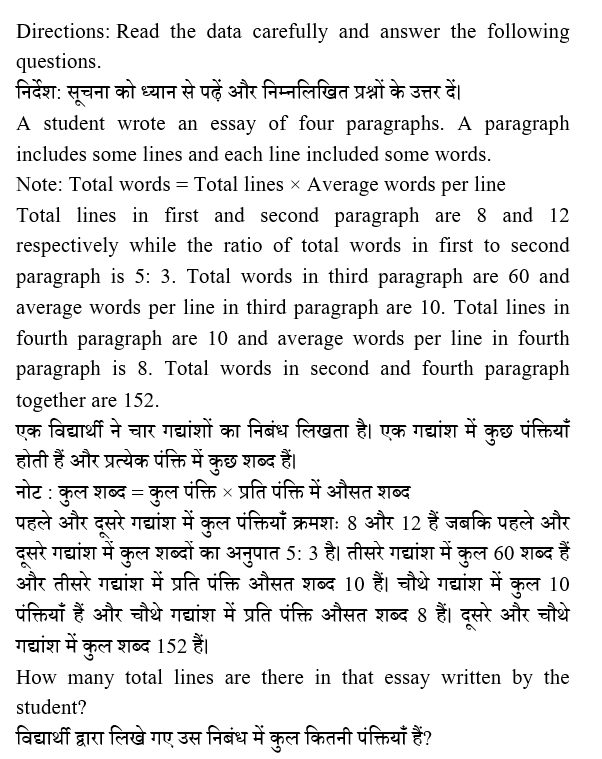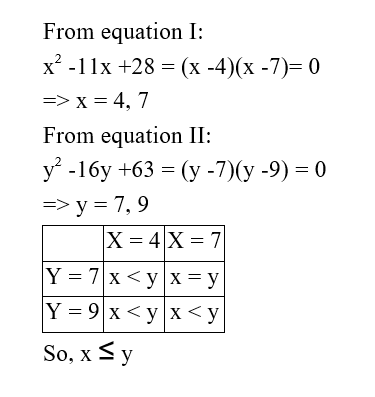Question 1: 
Question 2: 
Question 3: 
Question 4: 
Question 5: 
Question 6: 
Question 7: 
Question 8:
A 325-metre-long train runs at a speed of 60 km/hr. In what time will the train cross a man running at a speed of 5 km/hr in the opposite direction to that of train?
एक 325 मीटर लंबी ट्रेन 60 km/hr की चाल से चलती है। ट्रेन के विपरीत दिशा में 5 km/hr की चाल से दौड़ रहे व्यक्ति को ट्रेन कितने समय में पार करेगी?
Question 9:
The ratio of present age of Dheeraj, Kush and Vihan is 5: 7: 8 and Kush is 16 years older than Dheeraj. What was the ratio of Dheeraj, Kush and Vihan before 4 years ago?
धीरज, कुश और विहान की वर्तमान आयु का अनुपात 5: 7: 8 है तथा कुश धीरज से आयु में 16 वर्ष बड़े हैं। 4 वर्ष पहले धीरज, कुश और विहान के आयु का अनुपात कितना था?
Question 10:
For a tour, from 20 members team of RCB only 75% are selected and from 30 members team of MI only 40% are selected. Then, the players selected from RCB are what percent of the players selected from MI?
एक दौरे के लिए आरसीबी की 20 सदस्यों की टीम में से केवल 75% का चयन किया जाता है और एमआई की 30 सदस्यों की टीम में से केवल 40% का चयन किया जाता है। तो, आरसीबी से चयन किए गए खिलाड़ी, एमआई से चयन किए गए खिलाड़ियों का कितना प्रतिशत है?



